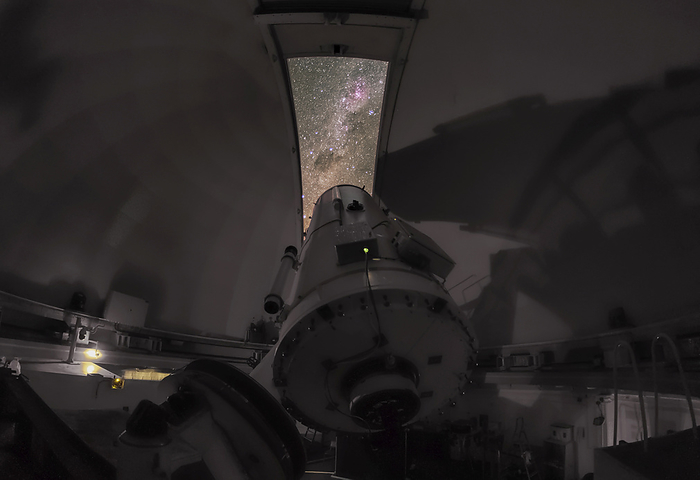
RM
1.52-metre telescope, La Silla Observatory, Chile
European southern observatory's (ESO) 1.52-metre telescope scanning the night sky at the La Silla Observatory, Chile. Further down at center-left of the slit there is the Coalsack Nebula, a dark cloud of dust. Its most popular instrument, the Boller and Chivens spectrograph (B&C), was used to study stars. Its most popular instrument, the Boller and Chivens spectrograph (B&C), was used to study stars, galaxies and comets for almost 30 years. The ECHelle + ELECtronic camera spectrograph (ECHELEC) helped astronomers understand the intense winds of Wolf-Rayet stars and the Fiber-fed Extended Range Optical Spectrograph (FEROS) discovered exciting exoplanets. Zdenek Bardon/EUROPEAN SOUTHERN OBSERVATORY/SCIENCE PHOTO LIBRARY

More
Top Categories
